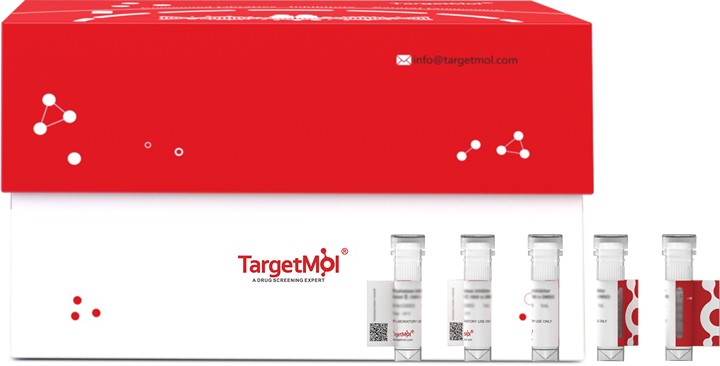- Remove All
 Your shopping cart is currently empty
Your shopping cart is currently empty
PBK/TOPK Protein, Human, Recombinant (His)
PDZ binding kinase (PBK), also known as TOPK (T-LAK cell-originated protein kinase), is a serine/threonine kinase related to the dual specific mitogen-activated protein kinase kinase (MAPKK) family, and has all the characteristic protein kinase subdomains and a C-terminal PDZ-binding T/SXV motif. PBK is expressed in the testis restrictedly expressed in outer cell layer of seminiferous tubules, as well as placenta. PBK may be enrolled in the activation of lymphoid cells and support testicular functions, with a suggested role in the process of spermatogenesis. This mitotic kinase phosphorylates MAP kinase p38 and seems to be active in mitosis. When phosphorylated, PBK forms a protein-protein interaction with tumor suppressor p53 (TP53), leading to TP53 destabilization and attenuation of G2/M checkpoint during doxorubicin-induced DNA damage. The expression level of PBK is thus upregulated in a variety of neoplasms including hematological malignancies.

PBK/TOPK Protein, Human, Recombinant (His)
| Pack Size | Price | Availability | Quantity |
|---|---|---|---|
| 50 μg | $600 | 7-10 days |
Product Information
| Biological Activity | No Kinase Activity |
| Description | PDZ binding kinase (PBK), also known as TOPK (T-LAK cell-originated protein kinase), is a serine/threonine kinase related to the dual specific mitogen-activated protein kinase kinase (MAPKK) family, and has all the characteristic protein kinase subdomains and a C-terminal PDZ-binding T/SXV motif. PBK is expressed in the testis restrictedly expressed in outer cell layer of seminiferous tubules, as well as placenta. PBK may be enrolled in the activation of lymphoid cells and support testicular functions, with a suggested role in the process of spermatogenesis. This mitotic kinase phosphorylates MAP kinase p38 and seems to be active in mitosis. When phosphorylated, PBK forms a protein-protein interaction with tumor suppressor p53 (TP53), leading to TP53 destabilization and attenuation of G2/M checkpoint during doxorubicin-induced DNA damage. The expression level of PBK is thus upregulated in a variety of neoplasms including hematological malignancies. |
| Species | Human |
| Expression System | Baculovirus Insect Cells |
| Tag | C-His |
| Accession Number | Q96KB5-1 |
| Synonyms | TOPK,SPK,PDZ binding kinase,Nori-3,HEL164,CT84 |
| Construction | A DNA sequence encoding the full length of human PBK (NP_060962.2) (Met 1-Val 322) was fused with a polyhistidine tag at the C-terminus. Predicted N terminal: Met |
| Protein Purity | > 80 % as determined by SDS-PAGE |
| Molecular Weight | 37 kDa (predicted); 37 kDa (reducing conditions) |
| Endotoxin | < 1.0 EU/μg of the protein as determined by the LAL method. |
| Formulation | Lyophilized from a solution filtered through a 0.22 μm filter, containing PBS, pH 7.4. Typically, a mixture containing 5% to 8% trehalose, mannitol, and 0.01% Tween 80 is incorporated as a protective agent before lyophilization. |
| Reconstitution | A Certificate of Analysis (CoA) containing reconstitution instructions is included with the products. Please refer to the CoA for detailed information. |
| Stability & Storage | It is recommended to store recombinant proteins at -20°C to -80°C for future use. Lyophilized powders can be stably stored for over 12 months, while liquid products can be stored for 6-12 months at -80°C. For reconstituted protein solutions, the solution can be stored at -20°C to -80°C for at least 3 months. Please avoid multiple freeze-thaw cycles and store products in aliquots. |
| Shipping | In general, Lyophilized powders are shipping with blue ice. |
| Research Background | PDZ binding kinase (PBK), also known as TOPK (T-LAK cell-originated protein kinase), is a serine/threonine kinase related to the dual specific mitogen-activated protein kinase kinase (MAPKK) family, and has all the characteristic protein kinase subdomains and a C-terminal PDZ-binding T/SXV motif. PBK is expressed in the testis restrictedly expressed in outer cell layer of seminiferous tubules, as well as placenta. PBK may be enrolled in the activation of lymphoid cells and support testicular functions, with a suggested role in the process of spermatogenesis. This mitotic kinase phosphorylates MAP kinase p38 and seems to be active in mitosis. When phosphorylated, PBK forms a protein-protein interaction with tumor suppressor p53 (TP53), leading to TP53 destabilization and attenuation of G2/M checkpoint during doxorubicin-induced DNA damage. The expression level of PBK is thus upregulated in a variety of neoplasms including hematological malignancies. |
Dose Conversion
Sci Citations
Calculator
Tech Support

Copyright © 2015-2025 TargetMol Chemicals Inc. All Rights Reserved.


